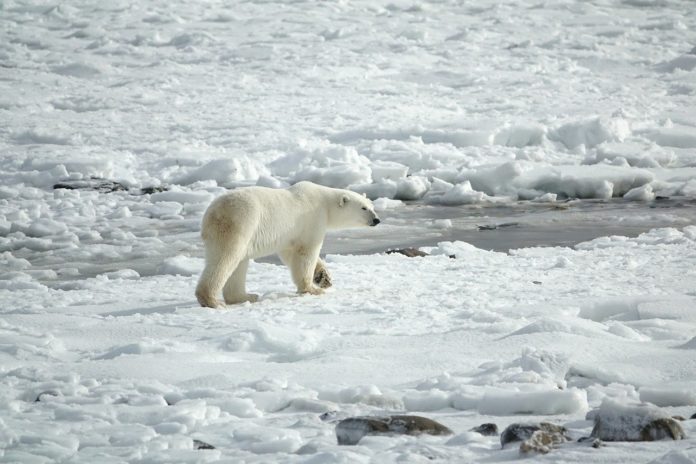The Arctic is on track to lose its summer sea-ice coverage entirely by the year 2050, and polar bear populations are already feeling the effects. These animals rely on sea ice to survive, and shrinking sea-ice coverage has forced them to switch from a nutritional diet of ice seals to whatever they can find instead.
According to a recent study, however, they aren’t doing a very good job of it. The study, which examined how efficiently polar bears forage for seabird eggs, was led by researchers from the University of Windsor and published in Royal Society Open Science.
Sea ice is crucial for survival
Sea ice is crucial for polar bears because it helps them hunt ice seals, an important source of fat and nutrients that helps polar bears survive the cold Arctic conditions.
During the winter months, when most of the Arctic is covered with sea ice, polar bears stake out ice seals’ breathing holes and catch them when they emerge. When the sea ice starts to melt in the summer, however, ice seals can surface further out in the water. This means that polar bears no longer have easy access to this important source of food.
As a result, many polar bears have turned further inland and started foraging for seabird eggs instead. This may sound like an easier meal in theory — an egg can’t fight or flee, after all — but the scientists behind the study were interested in learning how polar bears have adapted to this new food source.
Polar bears can eat eggs instead — but is it worth it?
“Given the increasing perturbation by bears here, it was important to determine if polar bears are gaining appreciable calories from eggs… and if they are foraging efficiently,” said Patrick Jagielski, a research associate at the University of Windsor’s Great Lakes Institute for Environmental Research and lead author of the study, in an interview with Academic Times.
To do this, the team used drones to observe polar bears on Mitivik Island in Nunavut. The island hosts Canada’s largest colony of common eider — a species of sea duck — and is the nesting place for thousands of birds each year.
While polar bears can supplement their diets with foods like seabird eggs, they waste a lot of energy searching for them. Over 11 days of observation, the researchers found that the bears repeatedly searched empty nests. They also couldn’t recognize fleeing eider hens as a sign of new nests with vulnerable eggs that were likely nearby.
Because the eggs are small, the energy gained from eating them diminishes when polar bears have so much trouble finding them. By contrast, these top predators know how to hunt for seals at the edges of sea ice, and they get a lot more nutrition from eating a seal.
‘Devastating’ consequences for birds and bears
The authors note that polar bears are only just venturing into eider nests for the first time, and their foraging behaviours may improve in the future. Yet while this would be beneficial for polar bears in the short term, the overall outlook for both polar bears and eider colonies isn’t promising.
“[S]hould the number of bears foraging in eider colonies increase, the consequences for eider populations may be devastating, making this resource unsustainable in the long run,” said the authors.
The prospects for polar bear populations in the Arctic are grim, but studies have shown that aggressive greenhouse gas emission reductions could save this species from extinction. By advocating for policies that will fight the climate crisis, we may be able to keep summer sea-ice coverage around for a little longer — and help put ice seals back on the menu.








































